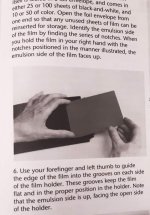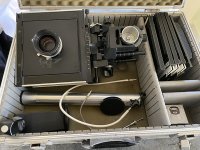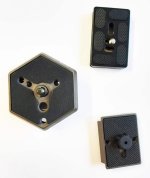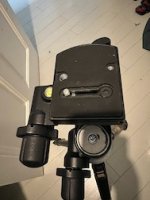Asha
Blithering Idiot
- Messages
- 11,274
- Name
- Asha
- Edit My Images
- Yes
A video that indeed shows that we’re not alone at screwing up.Thanks Chris. I’ll beat this in mind. In fact I might spend some time practice-loading the film holders into the camera without taking any photos, looking at how they fit more carefully.
The film was already loaded in this one when I got it, but it didn’t look like it was out of the channels when I took it out of the camera. I think the notch was at the dark slide end, but I don’t know if this might cause a snag? I’ve loaded my new sheets with the notch at the flap end of the holders.
I’ve also seen a few mentions of it being more likely in portrait mode, as @Karl.t1965 mentions.
In fact, this Bryan Birks video made me smile when I rewatched it earlier.
View: https://youtu.be/zMSWSICC-xE
It also shows that shooting a fairly large batch of film in one outing especially as a debutant is not the best of ideas.
A couple or imo a max of four exposures is more than enough to then soup and assess the results.
Thanks Chris. I’ll beat this in mind. In fact I might spend some time practice-loading the film holders into the camera without taking any photos, looking at how they fit more carefully.
The film was already loaded in this one when I got it, but it didn’t look like it was out of the channels when I took it out of the camera. I think the notch was at the dark slide end, but I don’t know if this might cause a snag? I’ve loaded my new sheets with the notch at the flap end of the holders.
I’ve also seen a few mentions of it being more likely in portrait mode, as @Karl.t1965 mentions.
In fact, this Bryan Birks video made me smile when I rewatched it earlier.
View: https://youtu.be/zMSWSICC-xE
Having the notch at the darkslide entry end may increase the chances of a snag.
Ive always put the notch to the flap end of the holder, besides anything else it allows very easy confirmation of what type of film is loaded just by opening the darkslide slightly ( in the dark of course) if notes are lost, memory failure etc






